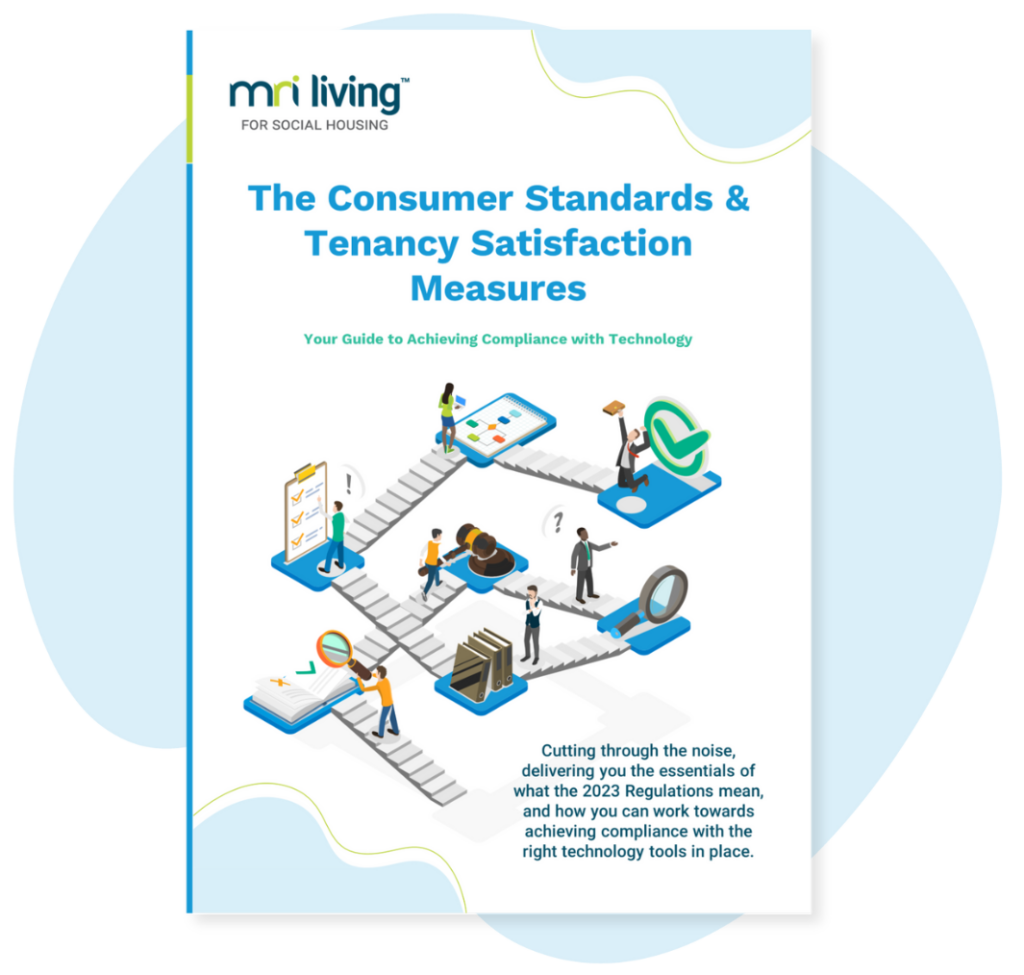The future of resident engagement
The voice of the resident will increasingly find itself as a central focus for housing providers to achieve their goals, prove social value and be compliant in the regulatory environment. Over the past year, the role that technology has played in reaching residents and gathering the customer voice has become more important than ever. This week, we were joined by HACT’s Digital Lead, Michael McLaughlin to discuss the ways that the sector is evolving.
The way housing providers operate has been shaken up – the past year necessitated the switch to digital or remote-only engagement between provider and residents. Most will never return fully to their previous model of working. Results from recent research by McKinsey estimate that during the pandemic, the uptake of digital practices or digitally enabled products has accelerated by around seven years. In fact, housing association, Stonewater recently announced that they will be permanently embracing a hybrid working model. This change will fundamentally influence the relationship housing providers have with residents and their teams.
For some organisations, especially those that work across multiple geographies, there have been opportunities for wider and more frequent resident engagement using digital platforms. During our Resident Voice Index™ focus groups, we learned from residents that many have been able to attend more consultations on account of them being digital, costing nothing to get to and involving no travel time.
The inability to gather face-to-face data has changed the way we work, but actually it has enabled us to reimagine our relationships and work with communities and residents in a way that we never have done before.
Michael McLaughlin, Digital Lead, HACT
Understanding low-touch residents
No two residents are the same and so insight can help establish what kind of service individuals expect and need. Michael explained, “The opportunities are to work, not just with residents in a different way, but work with residents that we’ve never worked with before. Often there may be residents who pay the rent on time, who don’t present with a complaint or repairs. Actually, they could make up a large percentage; this could be up to 30% of the resident base that housing providers just don’t speak to and there isn’t enough data from.”
The pandemic drove forward individualised care powered by remote tech. “Having an online platform or engaging with residents in the past year through welfare calls, for example, has allowed providers to gain better insight into the requirements of the quieter people.”
Understanding and delivering for multiple needs and customer journeys is the future of resident engagement. “Some of those residents who don’t present with repairs or complaints potentially could be people who work. Organisations may just be missing a significant percentage of the resident base because a housing provider doesn’t have the ability to communicate with them outside the hours of between nine and five.”
Mixed Modalities
More commonly used in education to refer to blended learning, the phrase ‘mixed modalities’ refers to the application of different approaches to appeal to the style of learning or engagement that best suits an individual and brings out the most positive results for all stakeholders.
On its own, the digital transformation won’t solve anything; housing providers will need to maintain personal and human services for some of their residents, but without data-enabled business Intelligence, organisations will find themselves with less capacity to deliver those human services with evidenced decision-making. Not only is this best practice but it can be expected to become regulation following the publication of the Charter for Social Housing Residents.
“Engagement can take many forms, but the crucial factor is that it is tailored appropriately. We expect all landlords to tailor their engagement in the future. Housing providers working remotely have re-imagined the resident/housing provider relationship. Everything doesn’t have to be face-to-face; it doesn’t have to be consultation like just sending letters out or turning up to a specific meeting. Instead, as the world opens up again, looking at ways of engagement that fit with an individual’s lifestyle.”
An approach that housing providers can adopt in order to deliver these individualised services, remain efficient and keep within budgets should be answering questions like: “How can we as housing providers use data to streamline processes, to create a better service, not only for the resident, but actually for organisational internal systems? How can we instigate creating a standardised platform of managing data, governing data and ultimately making better decisions?”
HACT has developed the UK Housing Data Standards in partnership with OSCRE, which include guidelines around complaints and feedback. These data standards will be adopted into our Resident Voice Index™ project.
Data for richer engagement
Utilising data is not the end of face-to-face consultation for some residents or direct community engagement in local areas. Used well, it can be a tool to deliver more time to teams to give rich customer support backed up by reliable evidence. “You can go out into the community and be as visible as possible, but if you don’t have that real evidential backing then you’re not able to build on that platform.
“Ultimately, could a housing provider be better served spending their resources in the community, providing direct tenancy support or using AI to interpret some of these online engagements to find out what that person wants? If adopting further tech is about understanding more about the data around that person because of when and how they engage, then having AI as part of that internal process could really help.”
Regulation
The pandemic hasn’t been the only driver of immediate change. Michael believes that, “Having set regulations, like the incoming resident satisfaction measures will require having robust data to back that up. It will enable residents to have more confidence in the work that’s done and also in the engagement, because it’s measured and transparent. The Charter for Social Housing Residents calls out for that transparency.
“Grenfell showed the need for that increased customer voice, not just customer voices, but what’s being done in response. Are residents actually being listened to? Is the organisation listening to the data they’ve got? And what are housing associations presenting back to residents off the back of that?”
The insights from our Resident Voice Index™ focus groups reflected this also; residents understand that their data will be used and are willing to give self-reported insights. However, providers should feed back on the ways insights have impacted service delivery and soon will be obliged to allow access to that data.
For many residents, digital-first strategies for basic communication are near established now. Using knowledge gathered, housing providers can deliver tailored resident experiences that automate time-consuming everyday tasks when residents want to complete them in order to create time and space for more personal levels of engagement.
The Consumer Standards and Tenancy Satisfaction Measures: Your Guide to Achieving Compliance with Technology
Cutting through the noise, delivering you the essentials of what the Consumer Standards and Tenancy Satisfaction Measures 2023 Regulations mean, and how you can work towards achieving compliance with the right technology tools in place. New regulatio…

